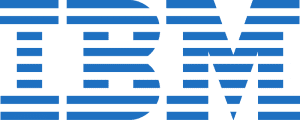Successfull project teams rely on well-defined workflows and collaboration across all engineering disciplines involved in a project.
Depending on the tools deployed along the lifecycle, those workflows and interdisciplinary processes can require a large share of manual work.

… for delivering the required scope of a system within a feasible project run time.
Requirements must be visible for all project team members across all tools, including all relevant details. Change managers need to monitor the progress of change requests related to requirements, developers need to link models and other artifacts to requirements, test engineers must understand from the requirements how the system under test is supposed to react, and authorities in regulated industries need to see the full traceability report in order to decide if a homologation request can be approved.
In the past, the exchange of engineering assets across tool boundaries was often implemented by a “copy, convert & synchronize” mechanism. Assets from one tool are copied, converted if necessary, and imported into another tool. With the project ongoing, this procedure must be executed regularly, which can turn out to create a significant extra workload.
While it may be working perfectly fine for a point-to-point scenario connecting two tools, complexity will rise exponentially with every additional tool introduced.
Working from a central repository could be a more feasible option, but so far robust and convincing implementations of this approach have not come up. There have been attempts using one tool (and one repository) covering all lifecycle disciplines, but those “one-for-all” tools showed significant flaws compared to specialized point tools.
The most promising option is an approach based on a Service Oriented Architecture, as defined with OSLC (Open Services for Lifecycle Collaboration). Engineering artifacts are accessible via their “services” and a standardized access mechanism ensures that lifecycle tools see and read the original artifacts, no matter in which tool repository these are maintained.
The Open Services for Lifecycle Collaboration (OSLC) is a widely available, vendor-independent standard for seamless integration of tool repositories. Engineering teams are able to link and access assets from different repositories without requiring copies.

The IBM Gateway is an integration solution that is primarily used in the context of Rhapsody. It enables the synchronization of artifacts between IBM Rhapsody and many other tools, including DOORS and DNG. It can therefore be used for the synchronization of artifacts and the creation of traceability analyses based on them, for example.
SECollab is a web-based engineering data and model review platform. SECollab federates engineering design, requirements, and change data across the entire project lifecycle from a single access point. Leverage and integrate the knowledge of your teams, wherever they are, whenever they want.
Based on the ReqIF standard (Requirements Interchange Format), this solution supports the synchronization of elements between ReqIF-compatible requirements management tools with different modeling tools, e.g. Enterprise Architect and IBM Rhapsody.
It can thus be used for the synchronization of artifacts and the creation of cross-tool traceability analyses based on them, for example.